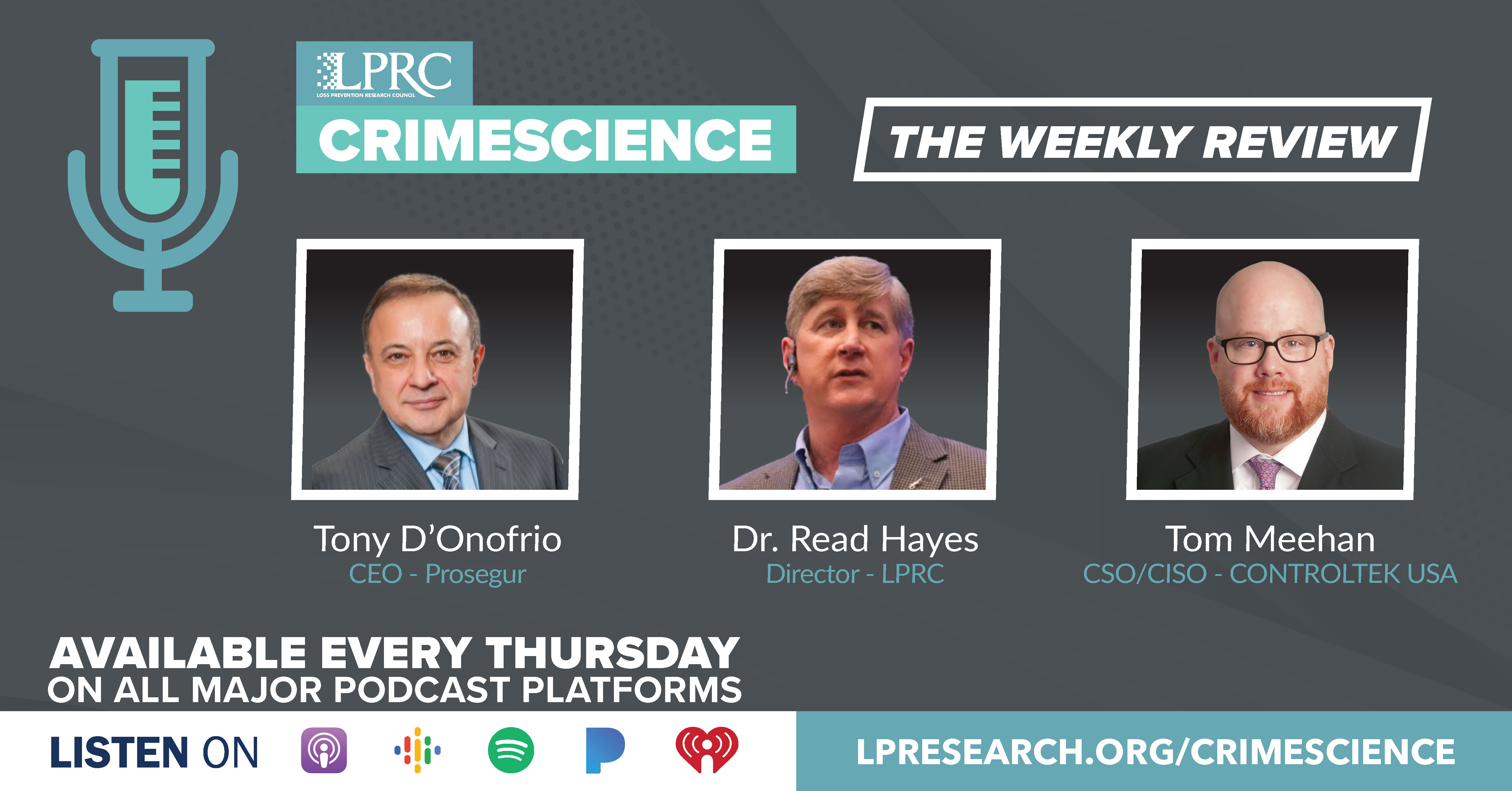Loss Prevention Research Council Weekly Series - Episode 99 - Latest Retail Tech Study and America's Shoplifting Epidemic
With Dr. Read Hayes, Tony D'Onofrio, and Tom Meehan

32nd Annual Retail Technology Study: Rising Digital Divide Lifts Retailers’ Ships
https://risnews.com/retail-tech-study-2022?from=gate
Let me start this week with one of my favorite studies that comes out every year from RIS News. Just published was the 32nd annual retail technology study which this year it’s titled ‘Rising Digital Divide Lifts Retailers’ Ships.’
RIS’ annual "Retail Technology Study" explores the current state of the retail landscape and benchmarks IT spend across more than 80 distinct retail solutions. As digital savvy shoppers continue to demand a personalized, tailored experience regardless of their preferred shopping channel, retailers are investing in their IT firepower to provide a differentiated experience for consumers.
Is the glass half full, or half empty? It all depends on your perspective. Retail has certainly faced its fair share of challenges over the past two years, but the industry’s glass is definitely half full – and rising fast.
Eighty-four percent of those surveyed report that revenues have increased over the past 12 months, and 42% say they have increased by more than 10%. Savvy retailers quickly pivoted in the face of ongoing COVID-induced disruption and continue to reinvent themselves in response to workforce challenges, supply chain woes, and digitally empowered consumers that increasingly demand a personalized path to purchase.
When asked for the one word best describes the current state of the retail industry, the top responses were evolving, dynamic, changing, fluid, and unpredictable.
The top 3 challenges identified for the next three years are dealing with legacy systems, employee engagement & wages, and application integration.
The top 3 tech-driven strategies for the next 18 months are improving IT network and network safety, expanding unified commerce, and developing personalized marketing capabilities.
More than half (57%) of retailers report an increase in tech expenditure compared to 2021 levels, and 13% plan on increasing their IT budget by 13% year-over-year. Overall, retailers report that 12% of their annual budget is currently allocated to information technology.
The store is still the undisputed revenue king of the retail enterprise, and investment continues to flow into brick-and-mortar operations. However, this year we are seeing less investment in physical retailing and a bigger commitment to digital efforts.
The top 3 tech investments today are curbside pickup, real-time store monitoring / KPIs, and digital devices which including tech such as signage, kiosks, magic mirrors, etc.).
Top 3 tech investments over next two years are shopper tracking capability, location based sensing for marketing communications, and digital devices again.
America’s Shoplifting Epidemic – Retail theft seems to have been normalized in many US Cities
https://www.wsj.com/articles/americas-shoplifting-epidemic-cities-theft-retail-cvs-national-retail-federation-small-business-crime-11649455129
Interesting editorial from the Wall Street Journal this weekend titled America’s Shoplifting Epidemic – Retail theft seems to have been normalized in many US Cities. Directly quoting the Wall Street Journal
Walk into a big-city pharmacy these days and you’ll notice that much of the merchandise is in locked plastic cases. Dishwasher pods, shaving cream, even shampoo bottles are locked up to reduce losses from what has become a shoplifting epidemic.
Two recent reports show the scope of the stealing. Business.org surveyed some 700 small businesses and found that 54% had an increase in shoplifting last year. Twenty-three percent said it happens daily. The National Retail Federation surveyed 61 medium to large retailers and found that organized retail crime cost an average of more than $700,000 per $1 billion in sales in 2020.
Mike DeAngelis, a spokesman for the CVS drug-store chain, says “our stores have experienced a 300% increase in retail theft incidents since the pandemic began.” In New York City, retail-theft complaints rose by nearly 16% between 2019 and 2021, according to police. The clearance rate, which means when a suspect is arrested or identified, dropped to 28.4% from 48.5% over the same period. In San Francisco, retail theft drove five Walgreens stores out of business last October.
The U.S. Chamber of Commerce’s response is to urge Congress to pass the Integrity, Notification, and Fairness in Online Retail Marketplaces for Consumers Act. The legislation would require Amazon, Ebay and other online platforms to verify the identity of any seller who makes 200 or more sales valued at a total of $5,000 or more a year. When a seller passes $25,000 in annual sales, the online platform would have to disclose publicly the seller’s name and current contact details.
Proponents say the law would increase transparency and make criminals think twice before they use the online platforms to sell stolen goods. But it would also increase the regulatory burden on legitimate small businesses. This is a federal attempt to solve what is a state and local failing.
The Chamber also cites a finding from the National Association for Shoplifting Prevention that at least 40 states have changed the threshold to allow thieves to steal more while facing lesser charges—theft of goods worth less than $950 is a misdemeanor in California. Cause, meet effect: The National Retail Federation reports that nearly two-thirds of retailers have seen more theft in states where the penalties were downgraded.
The political assault on police has also reduced the number of cops across the U.S., even as homicides, shootings and other violent offenses have surged. That leaves fewer cops to address crimes like theft. In cities with progressive prosecutors, even repeat thieves are often freed without legal consequences.
The Chamber recommends that states change the criminal code to address organized retail theft and increase penalties. Fine with us, but cities also have to end the impunity that’s driving this stealing spree.
















